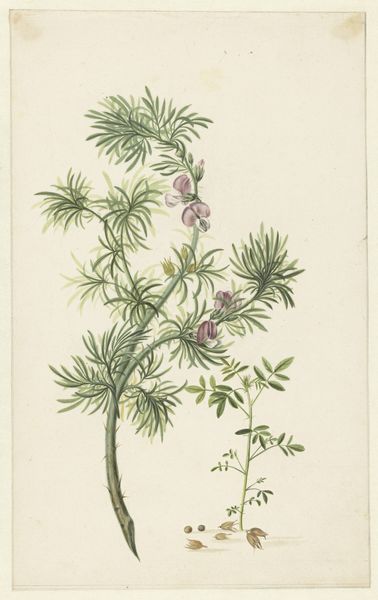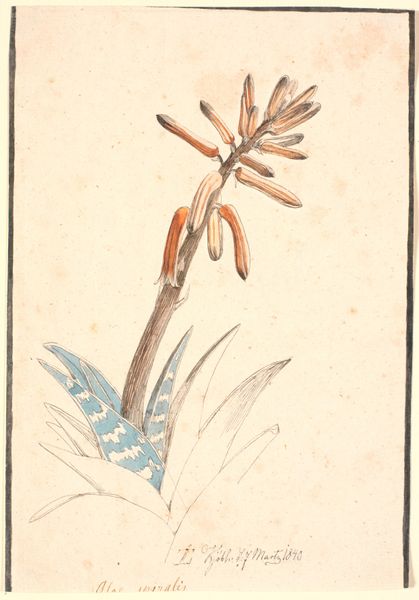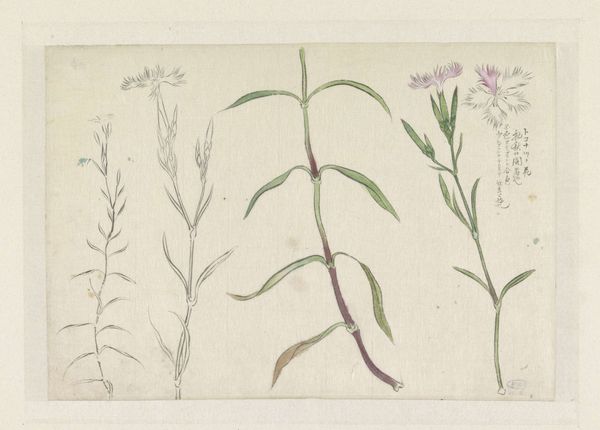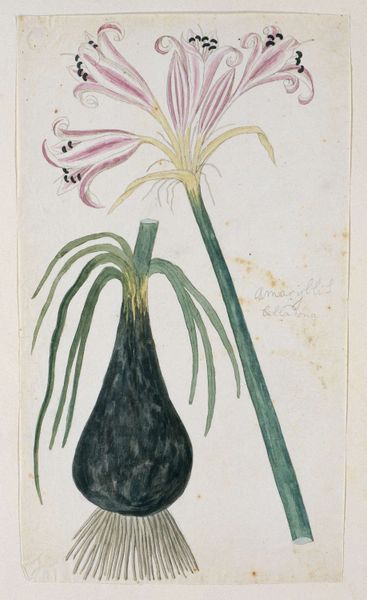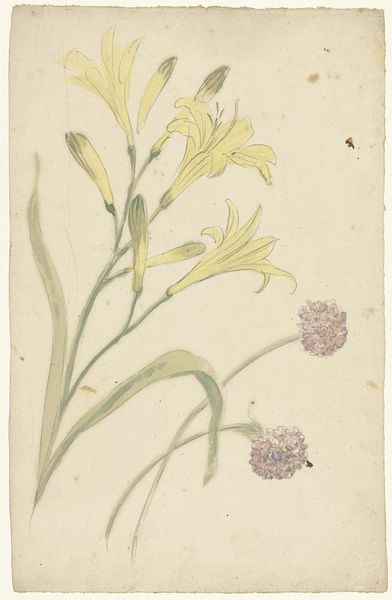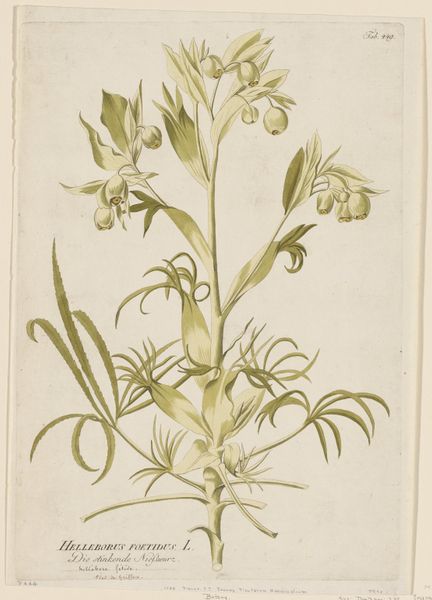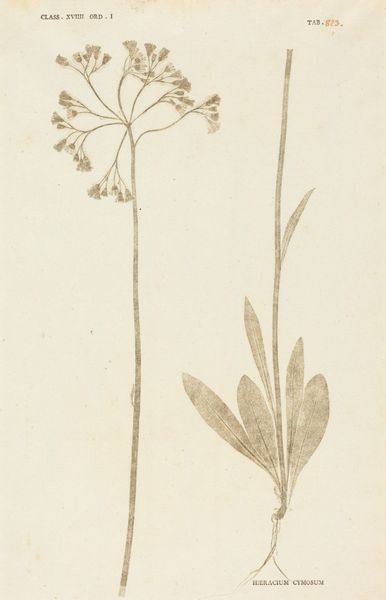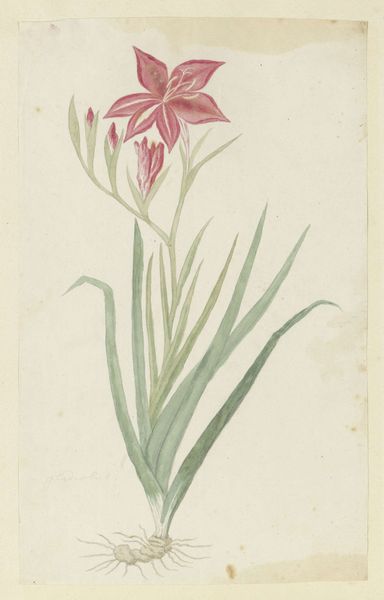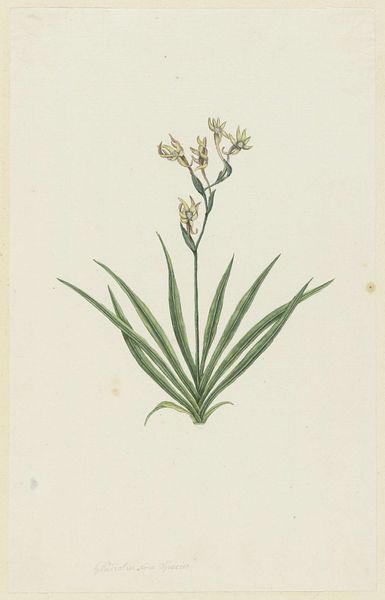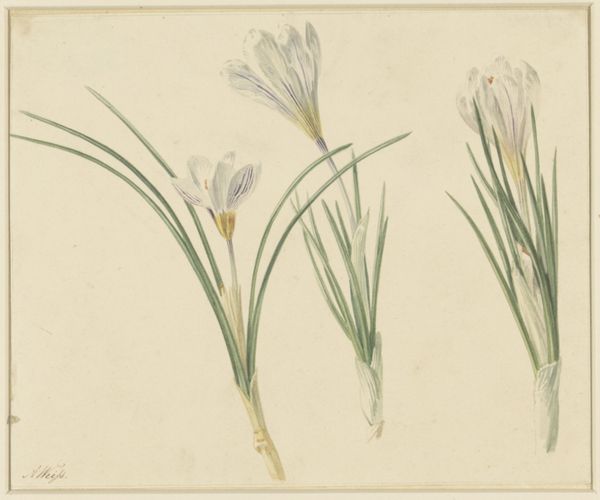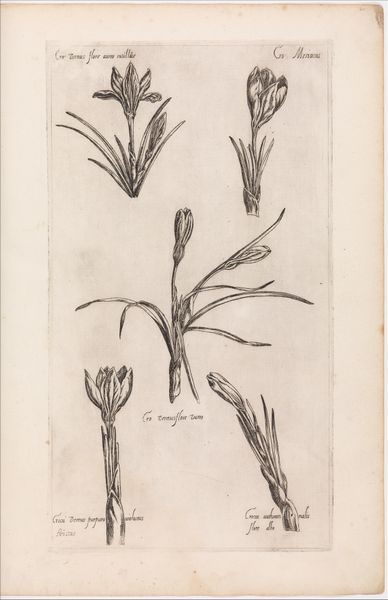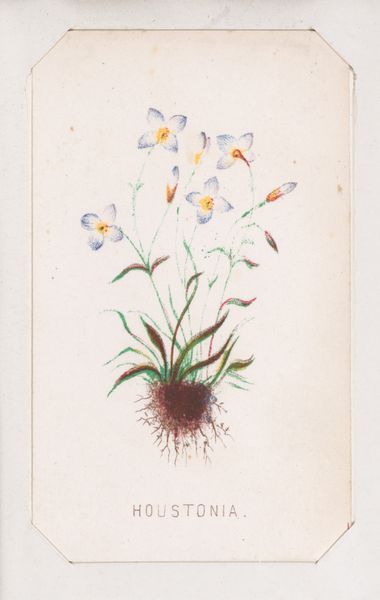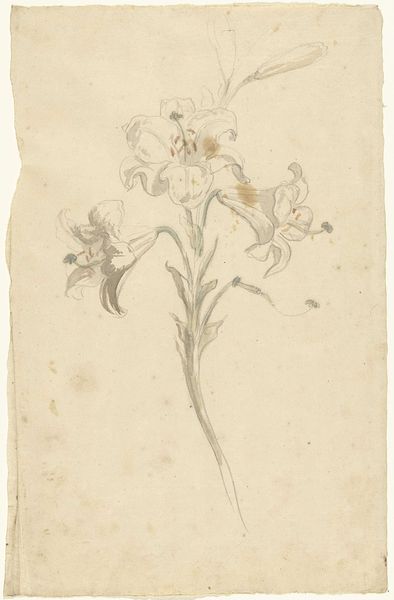
Dimensions: height 660 mm, width 480 mm, height 306 mm, width 188 mm, height mm, width mm
Copyright: Rijks Museum: Open Domain
Curator: This watercolor drawing presents the Babiana sambucina, or Bobbejaantje, a flowering plant, by Robert Jacob Gordon. The artwork likely dates from between 1777 and 1786. Editor: The delicacy is immediately striking. The almost translucent petals painted in shades of purple are truly captivating, contrasted against the solid bulb and delicate roots. Curator: Absolutely. Gordon, as a military officer and explorer in service of the Dutch East India Company, produced this drawing most likely in situ as part of documenting the local flora and fauna during his travels in Southern Africa. What makes this drawing compelling, however, are his skills in blending artistry and science during a period in which the natural sciences still blurred those boundaries. Editor: Indeed, thinking of its creation, I'm drawn to the conditions that make this art piece possible. What specific pigments were available? What sort of paper? This art would have depended upon established trade routes to bring supplies to the Dutch Cape Colony, revealing a dense network of exchange embedded into its very materiality. The idea of the labor involved from sourcing the pigments to preparing the drawing is an insight into the global flows that impacted artistic production. Curator: And one can read Gordon's practice as both scientific observation, meticulously documenting botanical details for practical reasons and as an aesthetic experience in the field where nature itself becomes the studio. The drawing exists in the cross-section of empirical endeavor and Romantic sentiment of exploration. Editor: Do you think it fulfilled its initial purpose as a form of scientific data? Were they primarily objects for data documentation, or did it go further than their intrinsic data use? What happened when the Dutch East India Company ceased to operate? These types of drawings found a new function and life, shifting their purpose with changing cultural and political circumstances. Curator: I agree. It serves as a reminder that our relationship to nature has changed so profoundly in only a few centuries. Looking at the precision with which Gordon captured every detail allows us to really meditate upon the environmental effects wrought by global industries that provide today’s resources. Editor: This shifts our view beyond aesthetics, turning us into explorers examining a network of historical circumstances behind this evocative work of art.
Comments
No comments
Be the first to comment and join the conversation on the ultimate creative platform.
